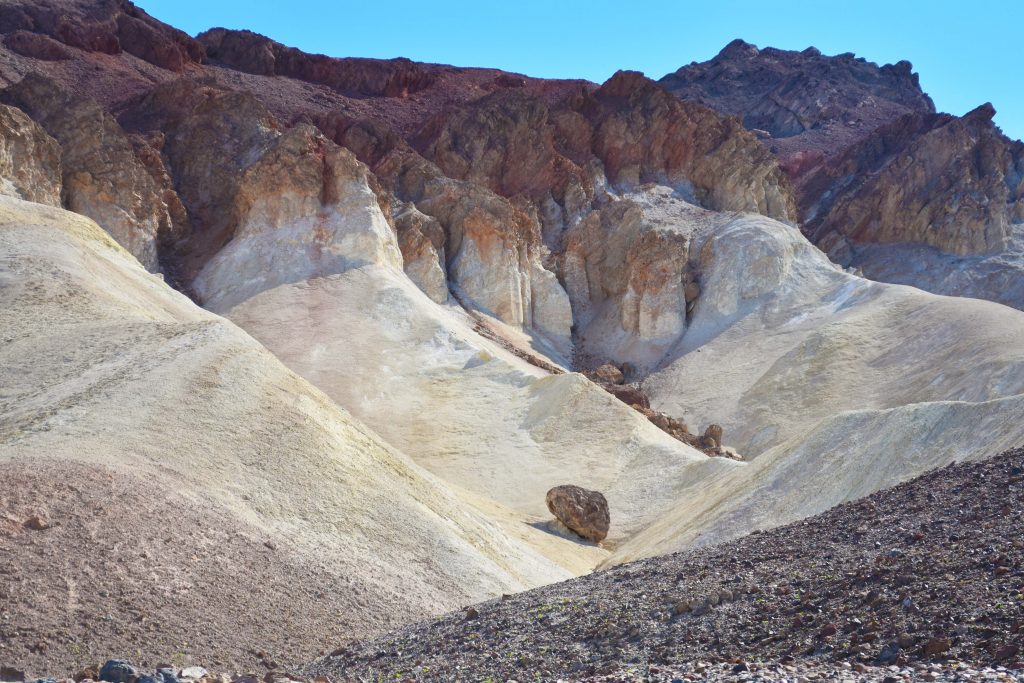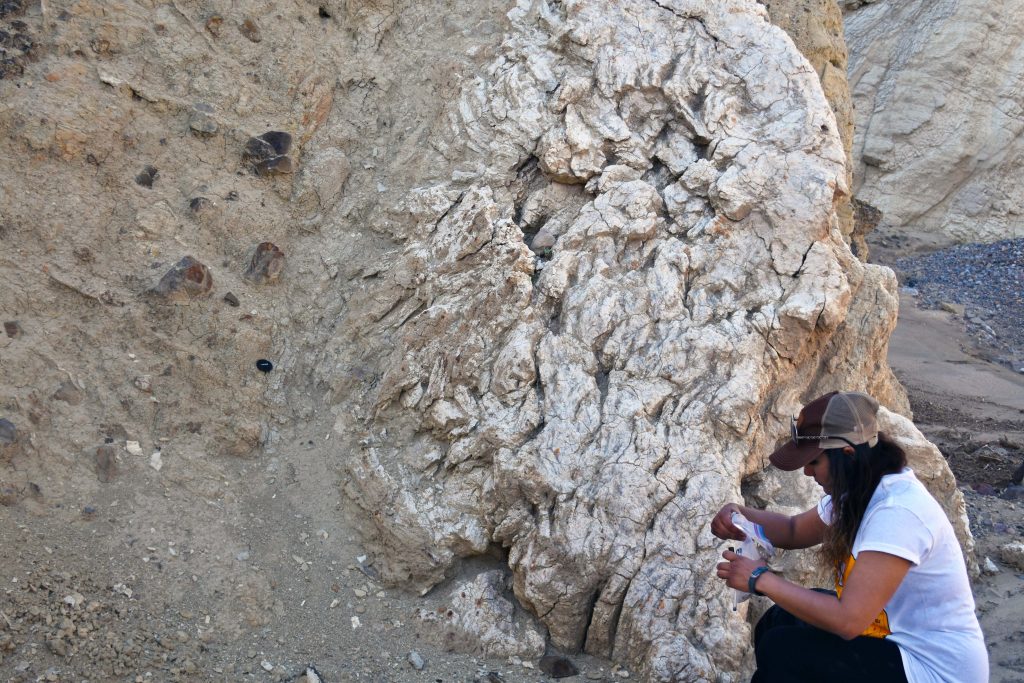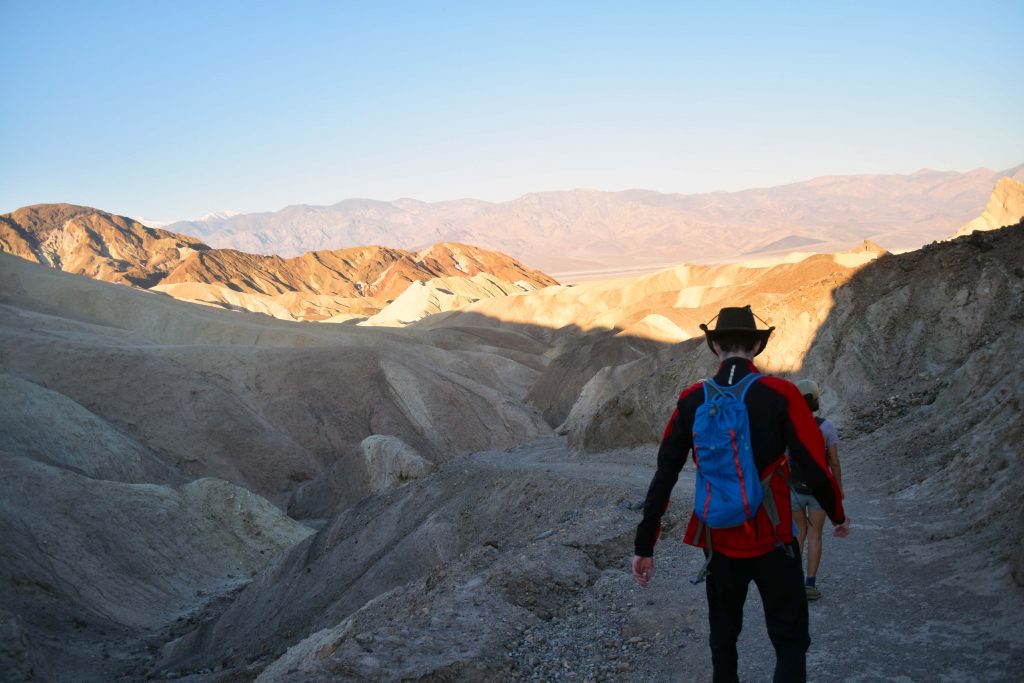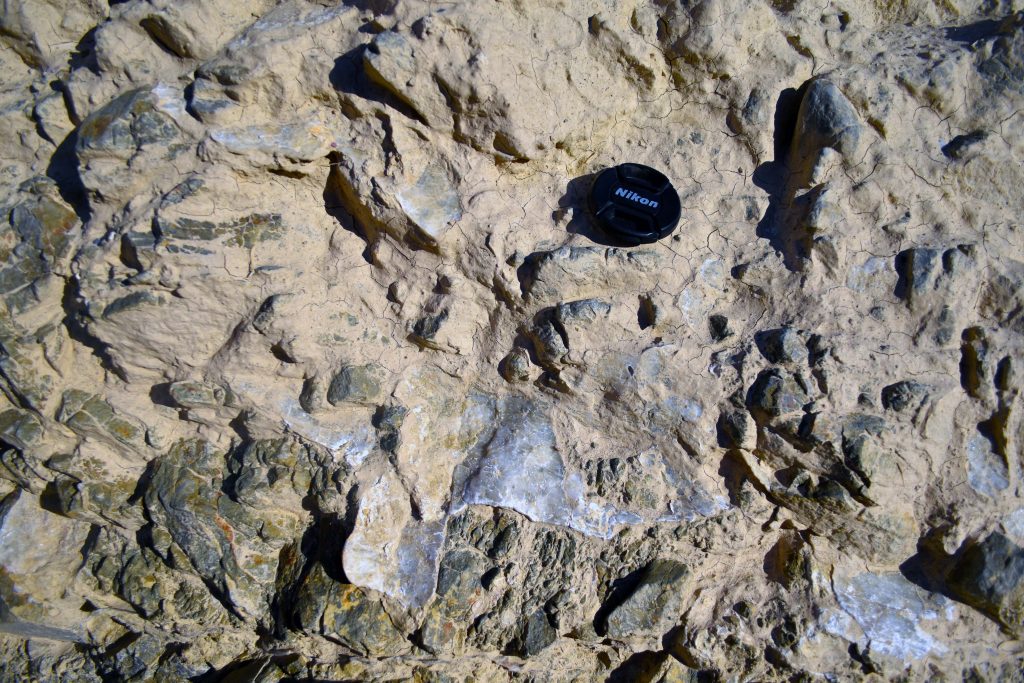Zabriskie Point, California State Route 190, Death Valley, California 92328, United States
April 15, 2019
Millions of years ago the Amargosa range formed due to tectonic activity that created the mountains and valleys of Southern California. The tectonic activity caused various sedimentary beds that were deposited over millions of years to be exposed to the atmosphere. The contrasting layers seen in the ranges indicate the sedimentary units which likely formed in different depositional environments. The basin and range formation process broke and titled the pre-existing layers enabling us geologists to witness this gorgeous landscape of contrasting colors that took millions and millions of years to form.
The complexity of the patterns on the ranges is further intensified by the process of erosion. These ranges experienced prolonged erosion which caused remobilization of, in some cases sediments and in others, chemicals from the sedimentary layers to bleed into other layers…forming a somewhat diffused appearance of the colorful ranges. The erosion process was probably responsible for leaching out certain chemicals out of the rocks during weather changes or even washing away water-soluble minerals and elements away from the rocks into the valley.
The erosion process is often also responsible for enriching certain types of minerals and elements. In case of the Amargosa Valley, rainfall dissolved water-soluble minerals like borates and chlorides from ancient deposits and redeposited them in the valley. The arid environment of Death Valley promoted the formation of the ubiquitous deposits of secondary borates and salts. As geologists studying borate re-deposition by water on Mars, Death Valley can’t be a better terrestrial analogue! We visited Zabriskie point on our way to sampling on Day 4 because it was close to our campsite and it gave us a wonderful view of potential sampling areas. We collected some really cool samples during our hike through the eroded hills. We found thin layers of evaporite minerals in the alluvial fans by the foot of the hills. These minerals should likely hold geochemical information about the aqueous process that led to their formation. I quickly collected some samples for some exciting lab work!



